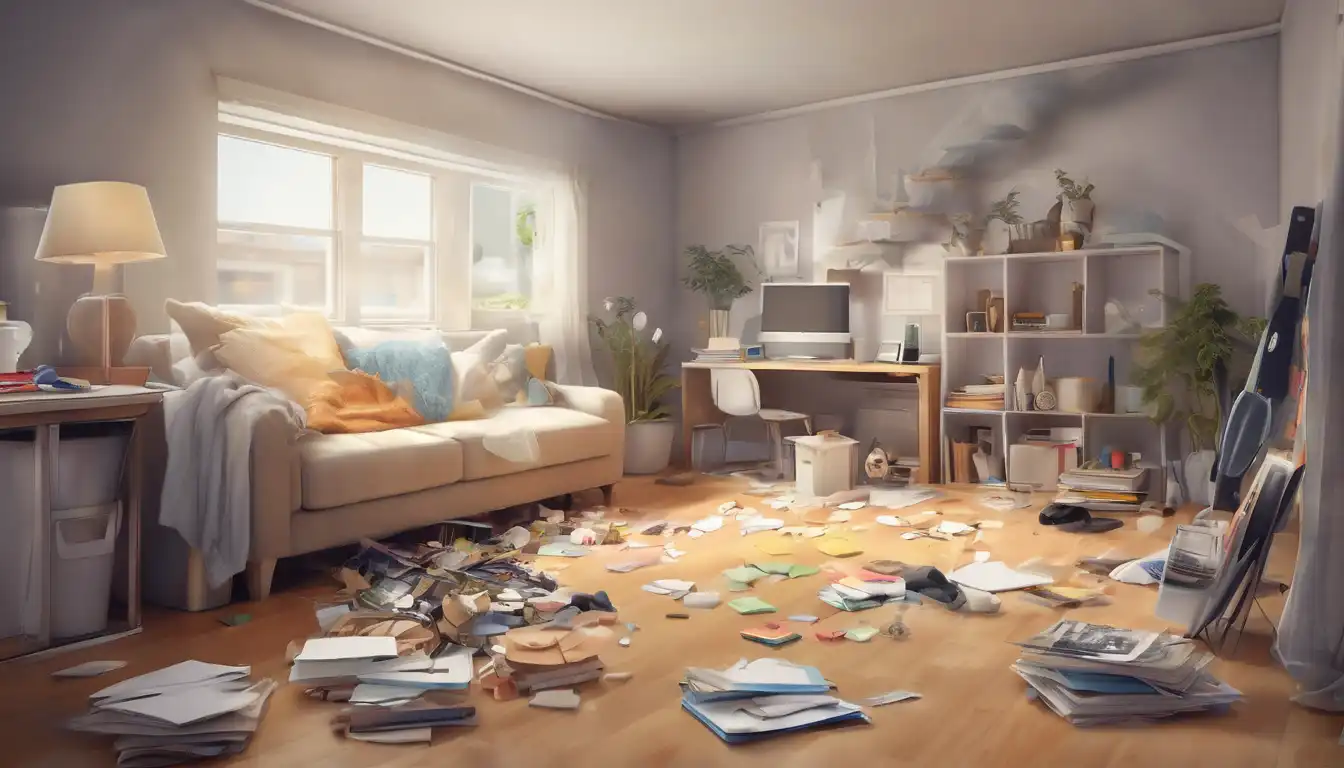Transform Your Living Space with These Effective Decluttering Methods
Living in a cluttered home can significantly impact your mental well-being and daily productivity. Many people feel overwhelmed by the thought of decluttering, but with the right approach, you can achieve a clean, organized space faster than you might imagine. This comprehensive guide will walk you through practical steps to declutter your home efficiently, creating an environment that promotes peace and functionality.
Prepare Your Decluttering Mindset
Before diving into the physical process, it's crucial to establish the right mindset. Decluttering isn't just about throwing things away—it's about creating a home that serves your needs and reflects your values. Start by visualizing your ideal living space. What does it feel like to move through rooms without obstacles? How would it improve your daily routine? This mental preparation will motivate you throughout the process and help you make better decisions about what to keep.
Set realistic expectations for your decluttering journey. You don't need to tackle your entire home in one day. Breaking the process into manageable sessions prevents burnout and ensures sustainable results. Consider implementing the minimalism principles that emphasize quality over quantity in your possessions.
The Room-by-Room Approach
Begin with the easiest room first to build momentum. Many organization experts recommend starting with bathrooms or entryways, as these spaces typically contain fewer sentimental items. This initial success will boost your confidence for tackling more challenging areas.
Kitchen Decluttering Strategy
The kitchen often becomes a catch-all for various household items. Start by emptying one cabinet or drawer at a time. As you handle each item, ask yourself these critical questions: Do I use this regularly? Does it serve a practical purpose? Is it in good condition? Create three piles: keep, donate/sell, and discard. Be ruthless with duplicates—how many spatulas or measuring cups do you truly need?
Implement the container concept—if your storage space is full, you must remove items before adding new ones. This prevents future clutter accumulation. Consider installing organizational systems like drawer dividers and shelf organizers to maintain your newly decluttered space.
Living Room Simplification
Living rooms tend to accumulate miscellaneous items from daily life. Start by clearing surfaces like coffee tables, shelves, and entertainment centers. Sort through books, magazines, and media—digital alternatives can reduce physical clutter significantly. Evaluate decorative items carefully; keep only those that bring you genuine joy or serve a purpose.
Cable management solutions can instantly create a cleaner appearance. Use cord organizers and power strip boxes to tame the technological jungle. For families with children, establish a toy rotation system to keep play areas manageable without limiting creativity.
The Four-Box Method for Efficient Sorting
This proven technique streamlines the decision-making process. Label four containers: Keep, Donate, Trash, and Relocate. As you work through each area, place every item into one of these boxes. The Relocate box is particularly useful for items that belong in other rooms—once you finish a space, promptly return these misplaced items to their proper homes.
Be honest about the Donate box. If you haven't used something in over a year, it's likely someone else could benefit from it. Many charitable organizations offer pickup services, making donation convenient. For valuable items you no longer need, consider selling through online platforms or hosting a garage sale.
Digital Decluttering Considerations
In our technology-driven world, digital clutter can be as overwhelming as physical clutter. Dedicate time to organizing your digital life alongside your physical space. Delete unnecessary files, organize photos into albums, and unsubscribe from email lists that no longer interest you. Cloud storage solutions can help reduce physical paperwork while keeping important documents accessible.
Establish a paper management system for incoming mail and documents. Implement a "touch it once" policy—handle each piece of paper immediately by filing, acting on, or recycling it. This prevents paper piles from forming on countertops and desks.
Maintaining Your Decluttered Home
The real challenge begins after the initial decluttering session. Develop daily habits to prevent clutter from returning. Implement the "one in, one out" rule—when you bring a new item into your home, remove a similar item. Designate specific homes for frequently used items, and always return them after use.
Schedule regular mini-decluttering sessions—perhaps 15 minutes each evening or a more thorough session once a week. Seasonal deep-cleaning provides opportunities to reassess your possessions and ensure everything still serves a purpose. Remember that sustainable living practices can help you make more conscious purchasing decisions moving forward.
Overcoming Common Decluttering Challenges
Sentimental items often present the biggest hurdle. Instead of keeping every memento, consider taking photographs of meaningful objects before letting them go. Create a limited space for sentimental items—once that space is full, you must make choices about what truly matters most.
If you share your home with others, involve them in the process. Compromise may be necessary, but establishing basic guidelines helps maintain organization. For family homes, create clearly defined zones for different activities and possessions.
The Benefits of Your Decluttering Journey
Beyond the obvious visual improvements, decluttering offers numerous psychological and practical benefits. You'll spend less time searching for items, reduce cleaning time, and potentially lower stress levels. Many people report improved sleep quality and increased productivity after decluttering their living spaces.
As you progress through this process, celebrate small victories. Each cleared surface and organized drawer represents movement toward your goal. Remember that decluttering is an ongoing practice rather than a one-time event. With these strategies, you'll not only achieve a clutter-free home quickly but also develop skills to maintain it long-term.
Ready to take the next step in your organization journey? Explore our guide on creative storage solutions to maximize your newly decluttered spaces. The path to a serene, functional home begins with these simple but effective steps.
